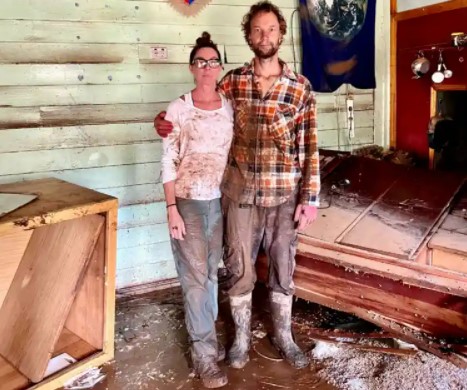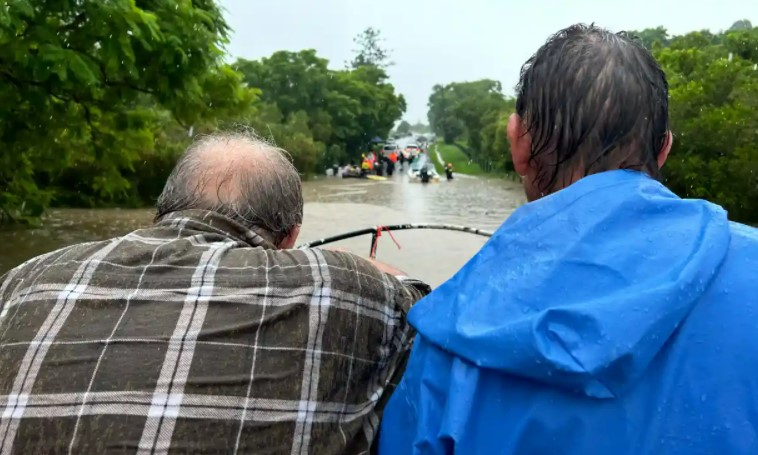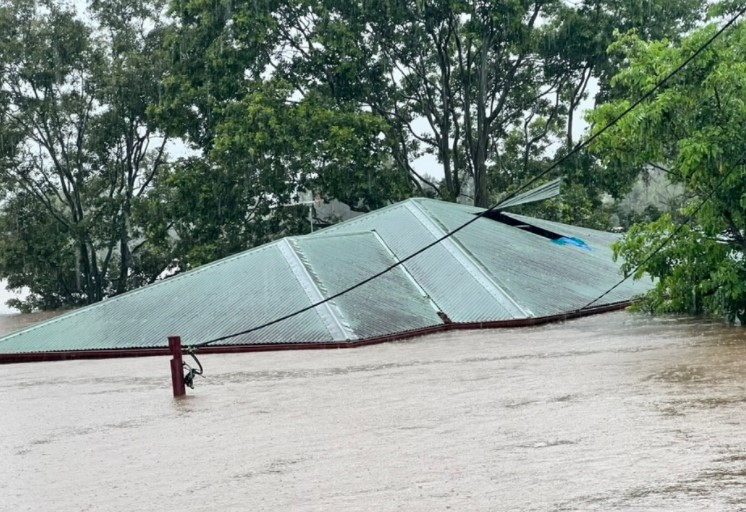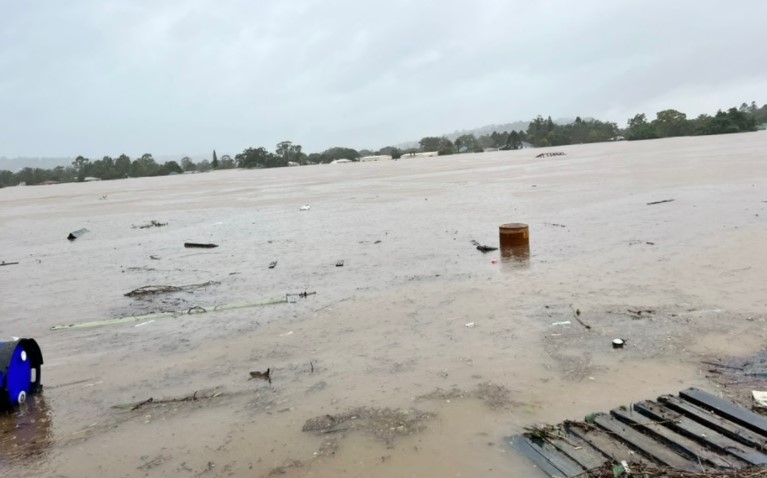Two weeks on, Lismore locals fear they may never recover
Two weeks after Lismore flooded to unprecedented levels, the northern NSW city still smells like "death and diesel and rotting meat".
That's the word from Lismore resident Eddie Lloyd, whose partner and son went through a harrowing time being rescued from her roof by a local in a tinnie, because the SES was unable to get every rescue done with their own resources.
"The Lismore CBD resembles a post-apocalyptic scene from a horror movie," Lloyd told Weatherzone.
"I can’t believe it's already been two weeks. It still feels like yesterday."

Image: Eddie Lloyd and her partner Adam in their mud-caked kitchen. Source: Eddie Lloyd.
Ironically, Lloyd and her partner both have Covid right now, which means they're isolated from other residents and unable, for now, to participate in the clean-up, which is still well and truly going on.
"There's just waste everywhere," she says.
According to Lloyd, people are wrestling with bureaucracy to get grants and being without money is a huge problem as most businesses have ceased trading for the time being, while many homeowners are uninsured.
The reason they're uninsured? It's not because they're negligent but because previous floods mean it can cost as much as $30,000 per YEAR to insure a house against floodwaters in a low-lying part of town. That's far too steep for most people.
"We've been left high and NOT dry," Lloyd says with a dry, ironic laugh.

Image: Eddie took this photo from the back of her rescue tinnie. Source: Eddie Lloyd.
With many homes still unfit for habitation, many families have split up, Lloyd says, with kids being sent to stay with friends and relatives elsewhere so they can attend schools.
On top of everything else, Lloyd says that mental health issues are a major problem in town now, with many residents suffering a form of PTSD.
Mental health issues were identified as one of the key negative after-effects of natural disasters by the Royal Commission into Natural Disaster Arrangements, which took place in the wake of the 2019/20 Black Summer bushfires. (The full report is long at 594 pages, but it's worth taking a look at the recommendations, which begin on page 33.)
"People are really traumatised and are trying to pick up the pieces of a shattered community," Lloyd says.

Image. Homes and hopes have been submerged in Lismore. Source: Eddie Lloyd.
One of the things that helps a community affected by a disaster recover is being able to get on with a semblance of normal daily routine, but that's still not possible in Lismore right now, Lloyd says.
"People aren't even thinking about work at the moment. Everyone is just trying to replace, repair, rebuild and clean. Everyone is just trying to put one muddy foot after another just trying to get through every day, and now Covid is an added challenge.
"It's going to be a very, very long recovery and there's absolutely no certainty that we will recover. That is the greatest fear in Lismore at the moment is that we're not going to get adequate assistance to rebuild. Everyone's really frightened that it's going to be the end of Lismore."

Image: The waters have now receded but the work has only just begun. Source: Eddie Lloyd
If you'd like to donate to the flood victims in NSW and Qld, the Red Cross page is here. You can also donate directly to the people of North Lismore through Eddie Lloyd's appeal page here.